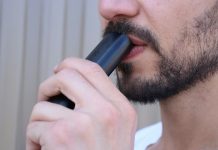Nearly all tests for COVID-19 include taking a swab sample from the back of the throat or nose. Sometimes these tests need a blood sample. The purpose of these tests is to assess whether or not a person has or has ever had an infection with drastic respiratory syndrome coronavirus 2 (SARS-CoV-2). This is the virus that generates coronavirus infection.

In this article, we are going to talk about all you need to know about testing for Covid-19, in a much easier and convenient way. Want to know more about how these methods can help you? Then read on!
Testing Methods
There are several ways to test for Covid-19, for this reason, a person may decide to take one of the following options, with the most popular being the molecular test. This test type looks for signs of a current affliction. The nature of the test is a real-time polymerase chain reaction assessment (RT-PCR). Sometimes referred to as the nucleic acid amplification test.
Nearly all tests for COVID-19 include taking a swab sample from the back of the throat or nose. Sometimes these tests need a blood sample, and there are even new saliva DNA collection kit options available now.
The person who runs the molecular test often takes a swab sample from both the back of the nose or throat, using a long cotton swab. If one prefers, taking your swab sample at the comfort of your own home is also welcome.
On the other hand, the RT-PCR test entails a healthcare practitioner collecting a sample and dispatching it for lab testing. From the examination, the lab technician can observe signs of the virus’s genetic composition in the sample.
A Covid-19 diagnosis is issued if this test can identify two specific SARS-CoV-2 genes. If only one is identified, an inconclusive result will be produced.
Another test to consider is an antigen test. Sometimes referred to as a lateral flow test, this test, in particular, discerns proteins created by the virus. This is a quick test that a person can take at home utilizing a small device that almost looks like a pregnancy test.
The testing process involves taking a sample using the swab given, the swab is then dipped in a vial fluid. The swab which contains a little fluid is then inserted into a small device. As the fluid diffuses through the device a line appears on its screen. This line works as a control line to show if the test is still working accurately.
After approximately 15 minutes, another line could appear. If this occurs the result is positive for the virus but if a second line does not become visible the test result will be negative.
It’s clear here that molecular tests are only able to identify current ailments. They are unable to tell whether somebody had COVID-19 in the past and got better.
The same can’t be said for serological tests though, as these tests can detect antibodies. Antibodies are apparent in the tissue and blood of anybody who recovers from COVID-19. These test types require a blood sample to be carried out.
While they are useful predictors of past SARS-CoV-2 infections, these test types are also able to uncover antibodies produced to fight other types of coronavirus. That said, even if a result comes out positive it does not necessarily imply that the person had COVID-19 before.
The Fast & Easy Way

From all the tests we have spoken about, antigen tests are known to be the quickest and most affordable. They are also known to be less sensitive compared to viral tests. Antigen tests perform best with a person in the early phase of COVID-19 infection when viral load is at its peak.
When it comes to accuracy, evidence shows that no test is 100% accurate. This means that some cases will be missed and presented as “false negatives” with some being told they have the infection when they actually don’t (false positives).
For this reason, positive tests are often treated as accurate while caution is exercised with negative test interpretations especially in a high-risk situation or where the person being tested is asymptomatic.
Even though this is a present-day reality, some specialists argue that general testing, even when it’s less accurate can help control the COVID-19 pandemic, particularly if the tests are repeated often, which is usually the case with these test types.
In any case, whether a test result is negative or positive, precautions such as the wearing of masks and social distancing must be continually implemented because a clean result does not guarantee immunity and also does not mean that the person cannot spread the virus.
The Centre for Disease Control and Prevention (CDC) recommends that a person who tests positive for COVID – 19 is responsible for informing others around him or her to self-quarantine for 14 days.
Summary
It’s pretty obvious, testing facilities have increased significantly in most countries in the past year. As a result, many testing options are now available.
The two leading types are diagnostic tests, which usually involve a swab sample, and antibody tests, which often need a blood sample. A diagnostic test can reveal if a person has a prevalent SARS-CoV-2 ailment, and an antibody test can uncover if they had one in the past and bounced back. Either way, which of these tests could work better and faster for you? If you want more information, contact the health department in your location.









































